
Smart #1 Review

Introduction
Smart made its name back in the 1990s, producing a truly tiny city car unlike anything else on the market. Over three generations, the Smart car grew a little but retained its dinky city-friendly design, even going electric in 2019 — making Smart the first European brand to switch its entire line-up (of two models) to electric power.
But 25 years is a long time for any car, and tastes and legislation have changed, meaning Smart has had to come up with something new.
Rather than try to recapture the magic of the original, the brand has decided to reposition itself as a maker of premium electric vehicles, which has seen Daimler-Benz team up for the new endeavour with Chinese car giant Geely, which already has a hand in European brands including Lotus and Volvo, as well as a host of Chinese domestic brands.
Select's rating score* - 3.8 / 5
At a Glance
While the Smart name might be associated with tiny city cars, the new #1 is very much a 21st-century SUV, albeit a compact one with a clear focus on urban living rather than roughing it in the wilds.
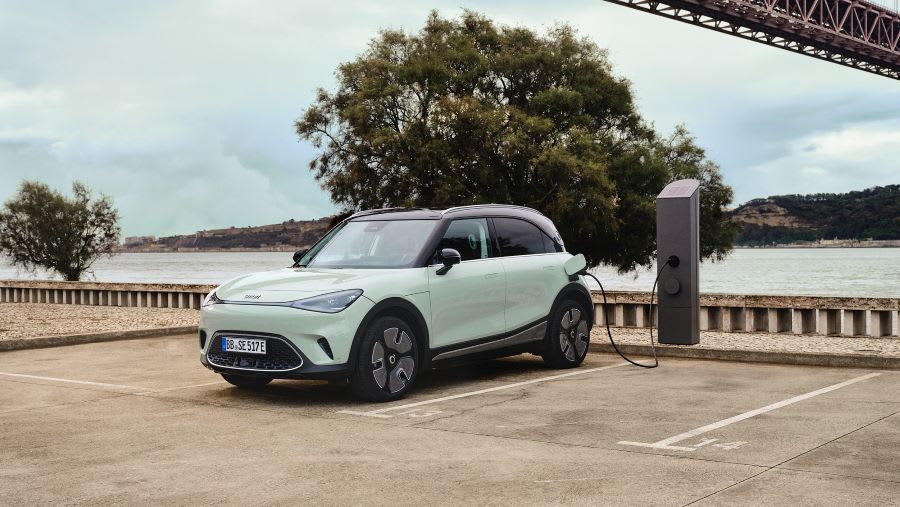
At 4.27m long, 1.6m high and 1.8m wide, it’s around the same size as a Mini Countryman and has an immediate presence thanks to some bold and chunky styling. There are no sharp lines or angles on the #1, its designers instead go for a slippery look that flows from a relatively low-set bonnet dominated by massive LED headlights back to a smooth tailgate bisected by a lightbar that echoes the shape of the headlights.
There are two regular trim levels — Pro+ and Premium — along with a strictly limited number of First Edition cars, all of which offer varying levels of equipment but the same 62kWh battery and 200kW (272hp) motor.
There’s also the Brabus version (below). Yep, a small electric crossover that’s been tinkered with by the German tuning giant, meaning it gets a two-motor all-wheel-drive powertrain and a 0-62mph time of less than four seconds, along with a host of sportier styling upgrades.
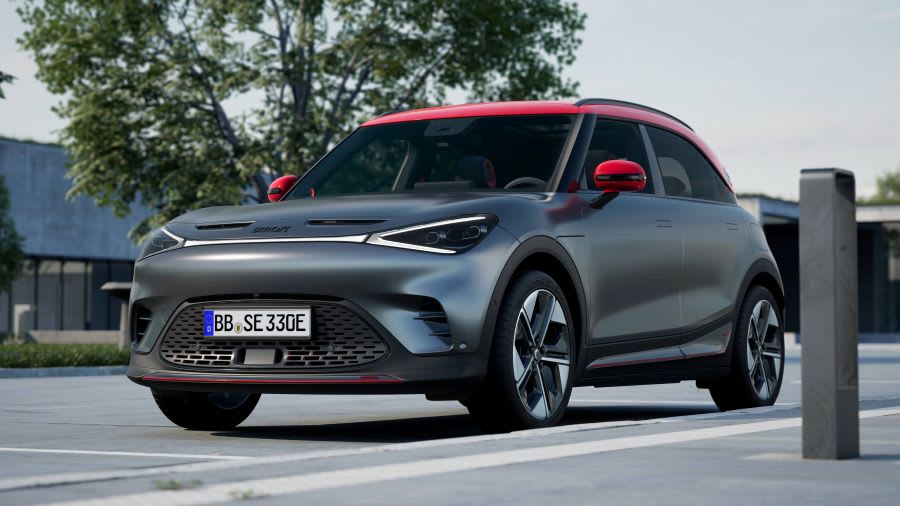
Key Features
Smart is keen for the #1 not to be merely a car but an “integrated information, communication and transportation device”.
In layperson’s terms, that means there’s a whole heap of connected services — from live navigation and charger locating to calendar syncing and Spotify streaming — all packed into the car’s impressive infotainment system.

The system is driven by the most powerful automotive processor that Snapdragon makes, and all lives in a full-HD 12.8-inch touchscreen that dominates the dashboard. The result is a pin-sharp and instantly responsive user interface that looks unlike any other.
Start up the car, and you’re met by the image of a cartoon globe and a giant cartoon fox loping across the screen. This is the avatar for the car’s voice-activated assistant, and whether you find it cute or weird will come down to personal taste, but it’s certainly a different and more fun approach than we’re used to.
At first glance, the screen seems busy and confusing, with lots of elements dotted around the place, but on the move, it’s surprisingly intuitive and user-friendly. It’s easily configurable, with dynamic widgets that stay pinned to the screen, a one-touch button to access key vehicle settings such as driver assistance, and a clever screen-within-a-screen that overlays data such as parking sensor warnings alongside navigation or other details rather than taking over the whole screen.
.jpg)
Performance & Drive
While the Brabus version promises all sorts of hooligan behaviour thanks to its 428hp and 3.9-second 0-62mph time, we’ve been driving the more mainstream Premium version that most buyers are expected to go for.
That single-motor version still packs a decent 272hp, all directed to the rear wheels. On paper, that translates to 0-62mph in a more than respectable 6.7 seconds and on the road, it means instant and rapid progress from any speed. There’s a sharp but not overly abrupt throttle response that makes darting through urban traffic a breeze and allows for quick A-road overtakes when needed.
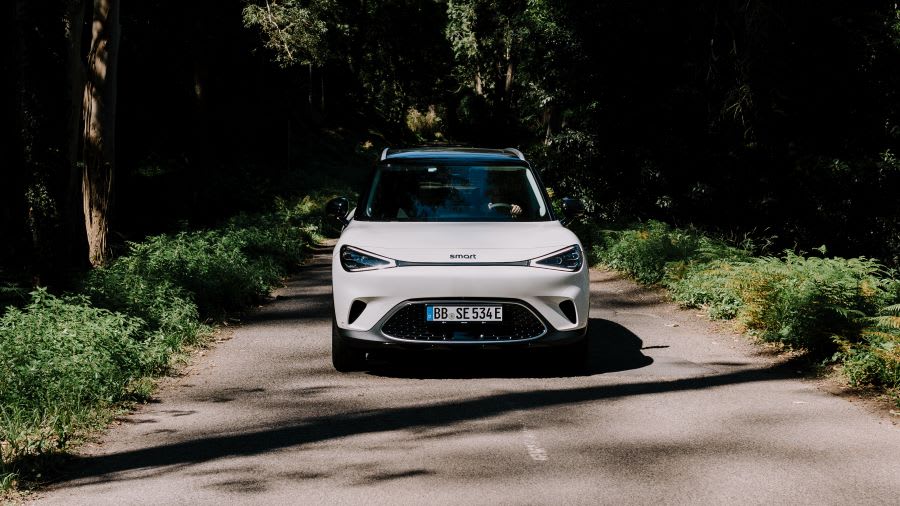
The #1 features three drive modes, two levels of brake regeneration and a full single-pedal drive mode which works brilliantly after a few minutes of familiarisation.
Sport mode does the usual business of sharpening the throttle and adding simulated weight to the steering, but even comfort’s throttle response feels quick enough. You’re also unlikely to spend much time driving the #1 in a sporty manner due to some pretty pronounced body roll. It’s surprising to experience an EV, especially such a relatively compact one, that leans quite as much as this.
.jpg)
That lean is down to the #1’s jacked-up ride height and soft damping, designed to give it a comfortable, city-friendly ride. At low speeds, it manages that pretty well, damping out drain covers, potholes and sharp edges on urban routes. However, at higher speeds, the soft settings bring a wallowy feel to proceedings that every so often gives way to a sharper edge that occasionally leaves the #1 feeling unsettled.
It’s worth noting that our test drive was on UK roads but in an early German-registered model, so it could be that a little RHD-specific fettling will iron out some of these lumps.
.jpg)
Running Costs
The #1 comes with just one battery option — a 62kWh unit that will charge at 150kW — however, different trim levels manage to squeeze different ranges from it.
Basic Pro+ cars promise up to 263 miles, while the fitment of a silicon carbide inverter and heat pump as standard on Premium and First Edition cars help push this up to 273 miles.
Our test car’s trip computer showed consumption of 3.8 miles per kWh after a couple of days’ abuse at the hands of journalists, suggesting that 4m/kWh should be easily attainable by the more cautious owner.
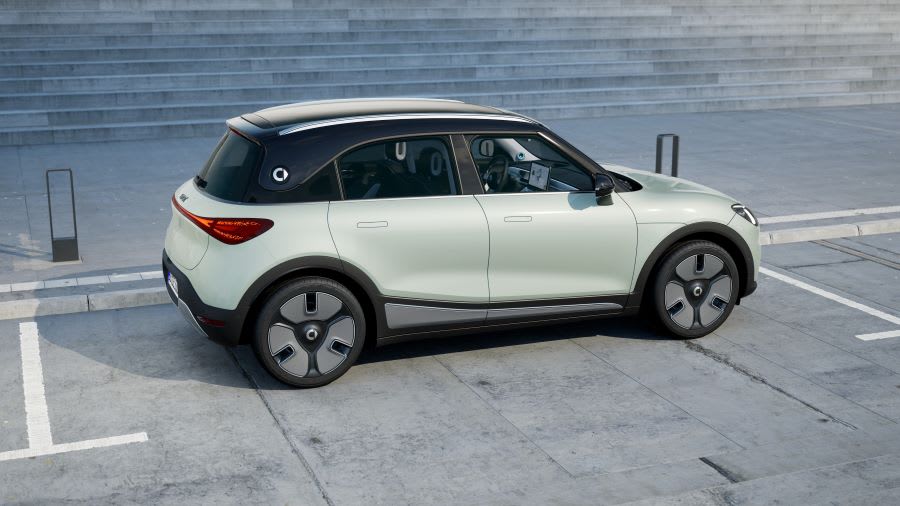
As with all EVs, the #1 qualifies for the lowest BiK rate, currently 2%, giving it an immediate advantage over similar-sized and priced petrol models.
A three-year/unlimited mileage warranty isn’t particularly generous compared with rivals, but the battery is protected by an eight-year/125,000 guarantee, eliminating the worry of excessive degradation.
One downside is that compared to several important rivals, leasing deals on the #1 are quite high. While a Kia Niro EV, Cupra Born or Hyundai Kona Electric can be picked up for under £400 a month, the #1 starts at £100 more.
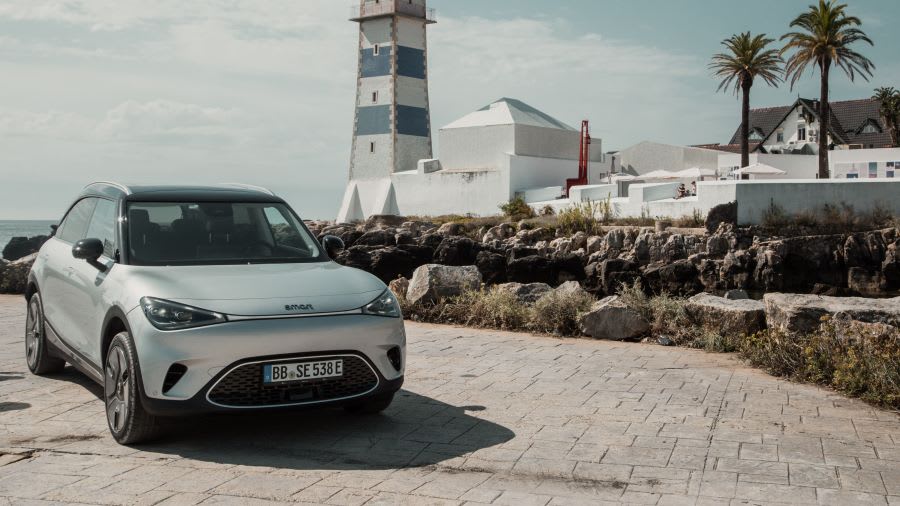
Interior
Like the exterior, the #1’s interior is all about smooth, fluid lines and soft edges. The dashboard and centre console appear to be a single flowing piece of gloss plastic that wraps around the instruments, touchscreen and heating vents before sweeping back between the front seats, all enhanced by 64 shades of ambient lighting.
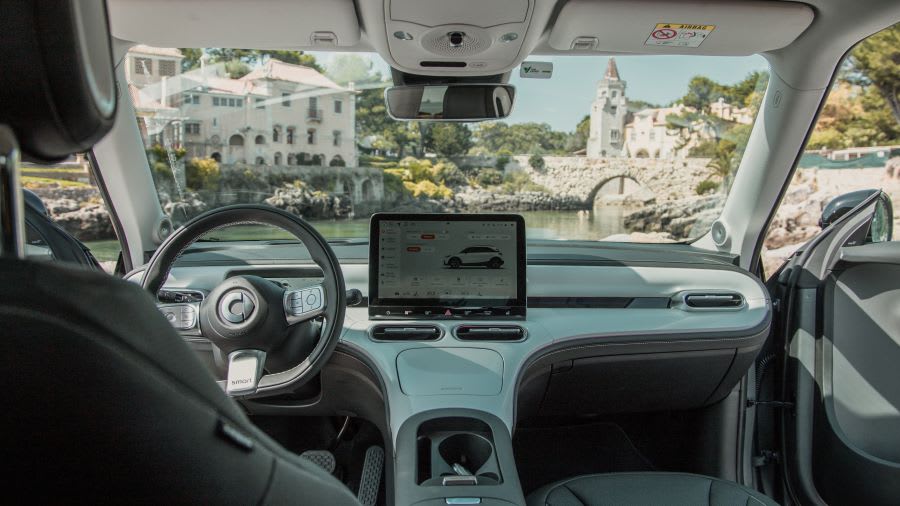
It’s fresh, unique and attractive and uses space cleverly, with nicely hidden areas for phones, cups and other items up top, plus a wide-open storage bin beneath. There’s a pleasingly high-end feel to most of the surfaces and materials, and plenty of smart (sorry) storage spaces dotted around the cabin.
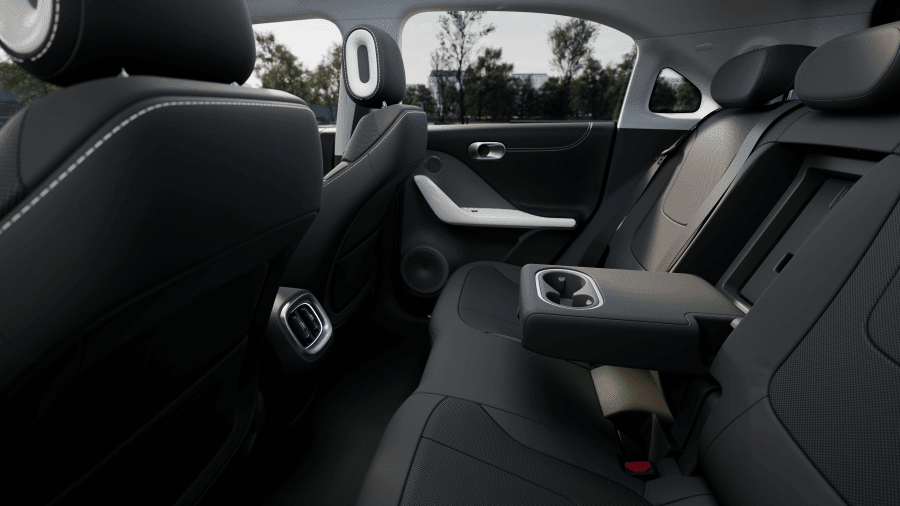
Despite its short wheelbase, the Smart #1 also packs in plenty of passenger space. Thanks to its upright seating position, there’s loads of legroom front and rear, with cabin size comparable to a Mercedes E-Class if Smart is to be believed. Four adults will certainly fit with no complaints, and it also manages to feel pleasingly airy thanks to the massive panoramic roof. There’s even a decent 411-litre boot (as long as you slide the rear bench forwards) and a small “frunk” for storing cables.
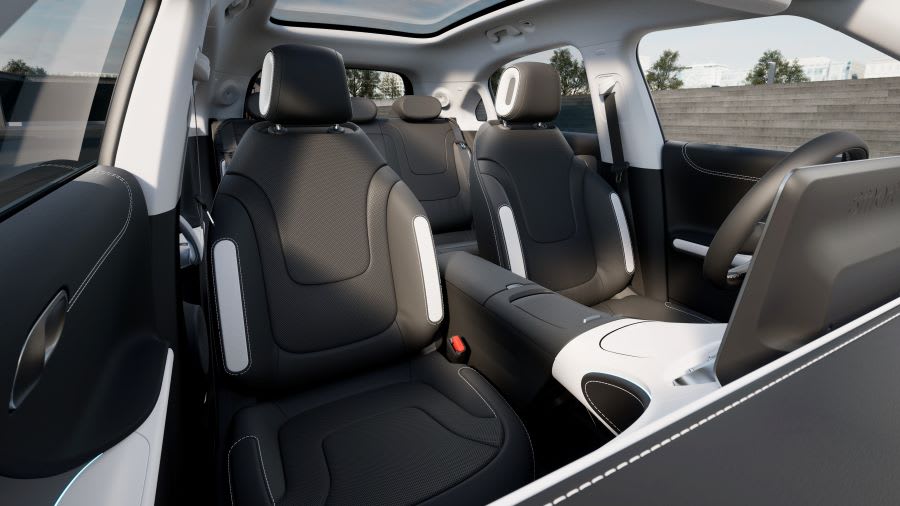
Safety
The Smart #1 has been given the full five-star rating by testing body Euro NCAP, scoring an impressive 96% for adult occupant protection and 89% for child occupants.
Its safety assist systems also scored well, with every model featuring emergency autonomous braking, evasive manoeuvre assist, emergency lane keep assist, blind spot warning and highway and traffic jam assist. Driver assistance also extends to adaptive cruise control and, in higher-spec cars, adaptive auto-dipping headlights.
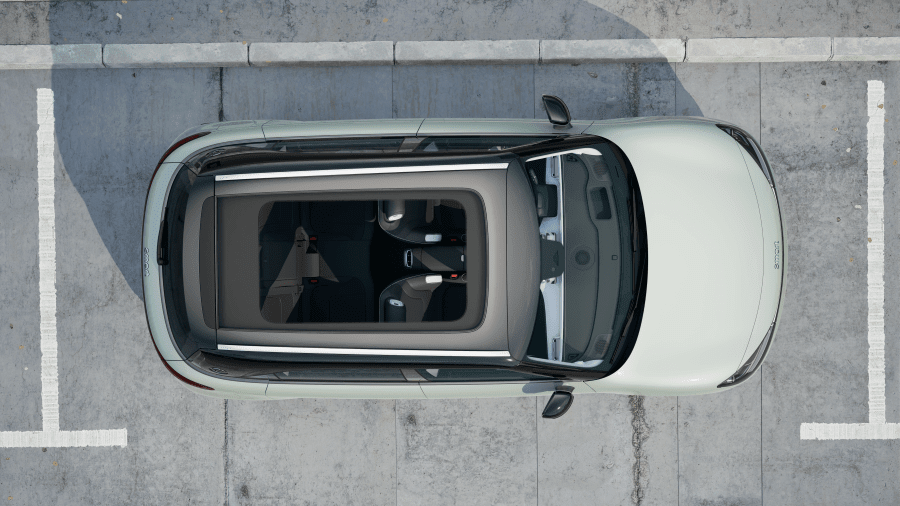
Options
Smart is still only taking notes of interest in the #1 as we write, so a full breakdown of specs and options isn’t available, but it seems likely that the brand will keep things simple by chucking loads of kit at every model and leaving buyers simply to worry about which of the four single-tone or six two-tone paint finishes they want.
All models get generous equipment, running to 18-inch wheels, a 12.8-inch touchscreen, a panoramic sunroof, LED lights, heated seats, a powered tailgate, adaptive cruise control and a 360-degree surround camera.
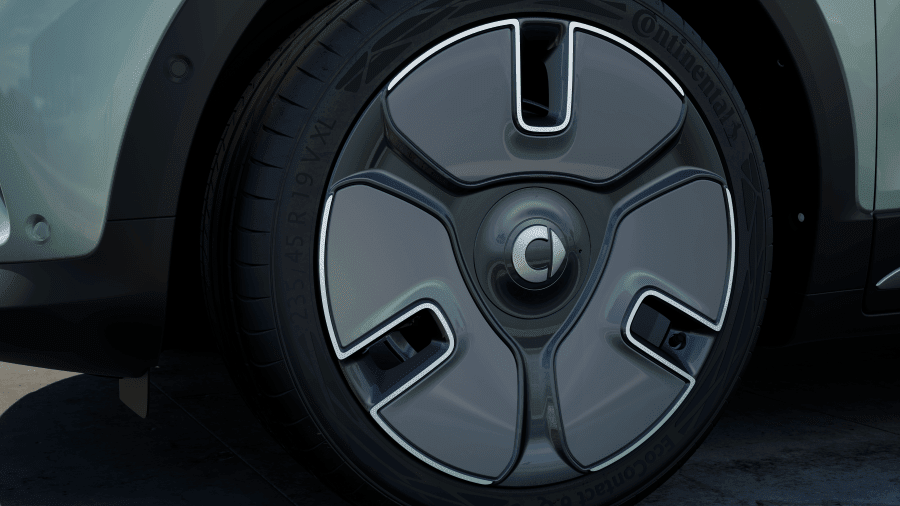
Premium expands on this with matrix adaptive headlights, a head-up display, Beats 13-speaker sound system and an automatic parking assistant. First Edition models, of which just 100 are coming to the UK, get the same equipment but unique design touches.
The Brabus edition also gets a host of unique design features for a more aggressive look. These include bonnet vents, 19-inch wheels and unique contrast paint. Inside, the steering wheel is wrapped in Alcantara, and the seats are clad in microfibre suede, alongside red seatbelts and metal pedals.
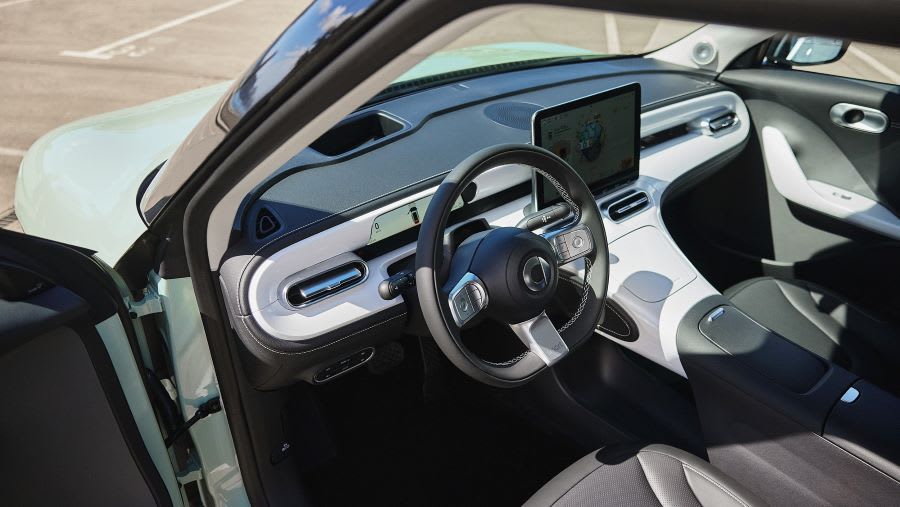
Rival Cars
The #1 sits in a slightly odd place in the market, with clear premium aspirations but no direct premium rivals. Next year, Volvo’s EX30 (below) will arrive, sharing the same Geely platform and starting from around £33,000, but models like the BMW iX1 or Mercedes-Benz GLA are substantially larger and more expensive.
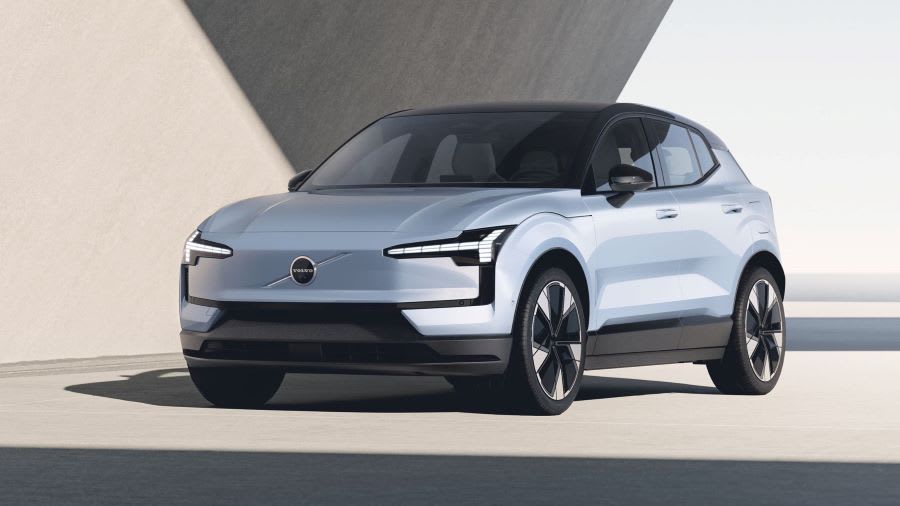
There are, however, plenty of more mainstream models that don’t have the #1’s premium pretensions but start at a similar price and are worthy of consideration.
The Kia Niro EV, related Hyundai Kona Electric and BYD Atto 3 are all within £1,000-£2,000 of the #1 and offer very similar range and even more interior space. There’s also the Renault Megane E-Tech to consider, as well as more hatchback-styled machines such as the Cupra Born (below).
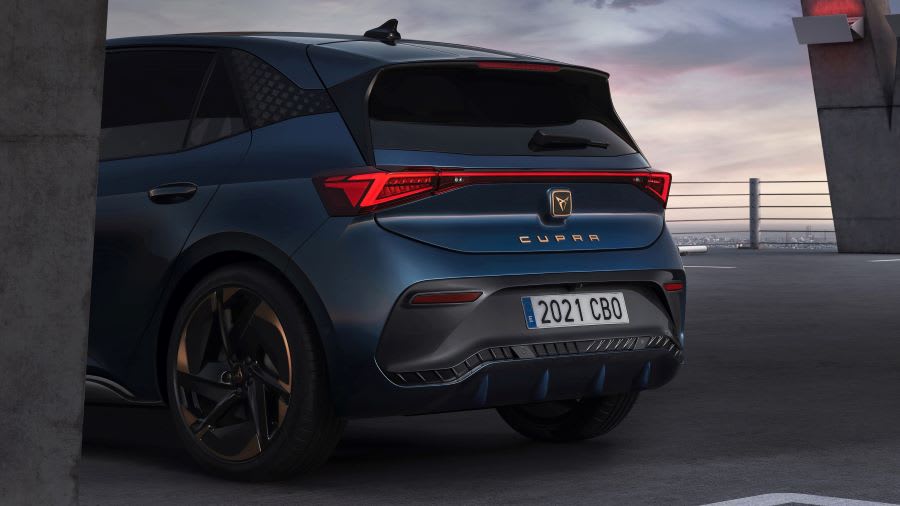
Verdict
Smart’s reinvention as the maker of electric SUVs seems like an odd one, especially as more brands are suddenly looking to make small, affordable electric hatchbacks. But the shift seems to have been a successful one.
The looks are bound to divide opinions, but beneath the surface, there’s lots to commend it, including a surprisingly roomy four-person interior with a refreshingly different approach to design, materials and user interface.
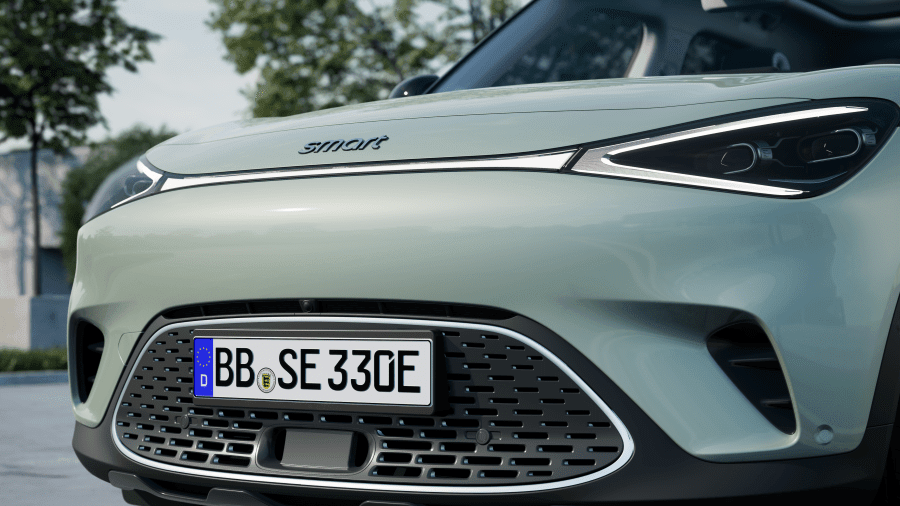
The single-motor powertrain also packs plenty of punch and the sort of range that banishes anxiety even on longer trips, although drivers looking for the last word in EV thrills should probably look elsewhere.
With all the connectivity you could ask for, and a generous starting specification, the #1 has all the comforts a modern motorist could ask for. It’s only the relatively high monthly costs that might put people off.
.jpg)
Where to next?
View latest Smart #1 leasing deals - from just £502.24 per month inc VAT**.
Call us on 0118 3048 688 or hit the green 'Enquire' button for more details.
Looking for a great deal? Check out our incredible range of car lease deals.
New SUV? Read our latest Car Reviews and find the right model for you.
Want to know more about leasing? Take a look at our comprehensive Leasing Guides.
Interested in everything motoring? Why not catch up on all the latest Car Leasing News.
**Score based on Select’s unique meta score analysis, taking into account the UK’s top leading independent car website reviews of the Smart #1
**Correct as of 28/06/2023. Based on 9 months initial payment, 5,000 miles over a 48 month lease. Initial payment equivalent to 9 monthly payments or £4,520.16 (Plus admin fee) Ts and Cs apply. Credit is subject to status.



.jpg)















